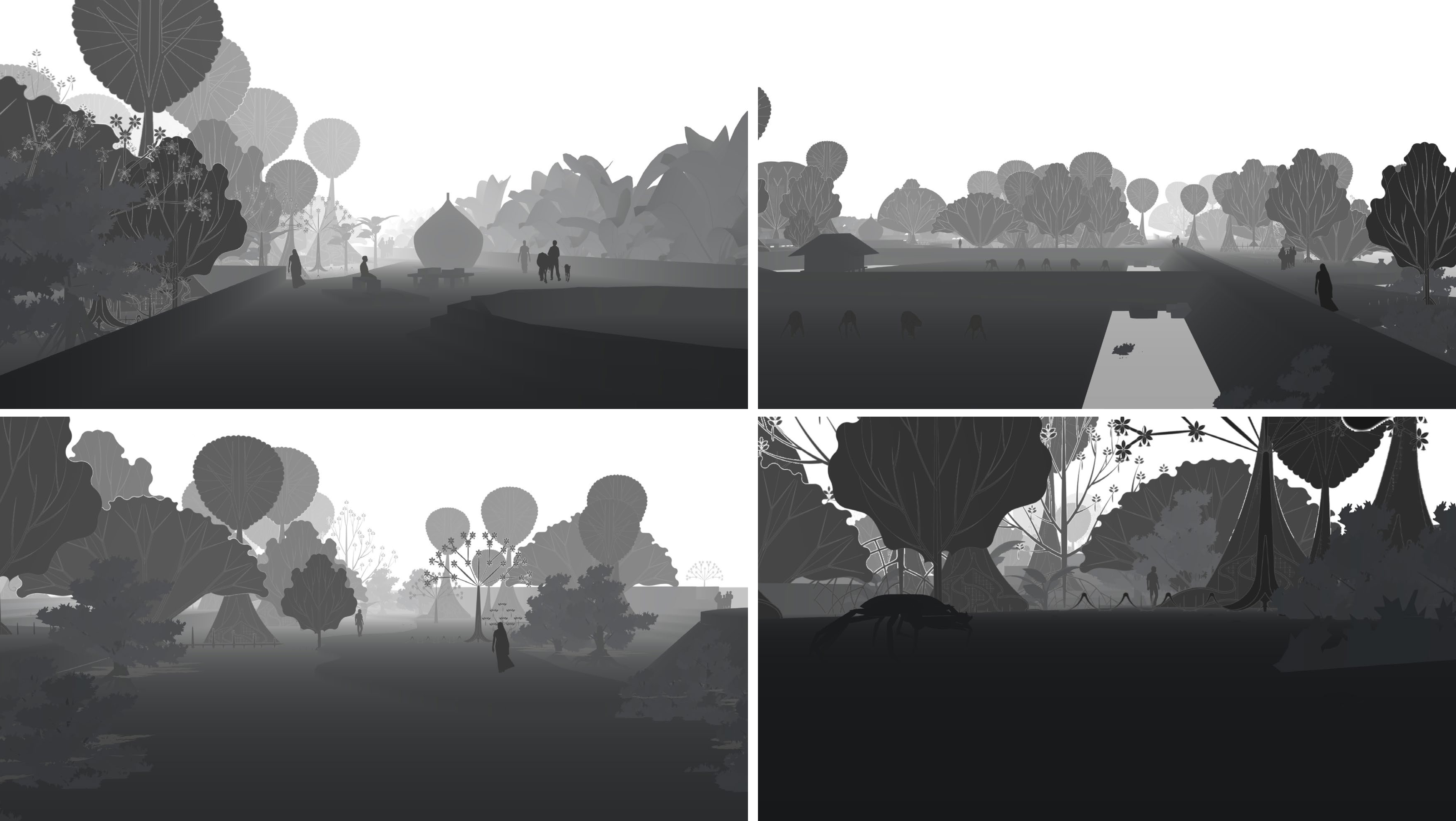
The Moongrove Garden
Diploma
The Oslo School of architecture and design
The coastal human - forest interface of the Bengal delta is locally called ‘The Country of Tides’, where an inhospitable saline land of mangrove meets manmade freshwater landscapes in the fractal matrix of countless rivers and channels that are fed by brackish moon tides. To ensure a flood and saline free inland environment, people had to control this landscape, and as a result, today the interface is divided into polders and forests. How should dwellers meet the Mangroves in this hotspot of ecological, geomorphic, and cultural diversities? People stopped capturing new forest lands long ago and locked themselves inside the polders, but the rivers still continue to erode and deposit at the polder’s outsides. New lands without a clear property status are created between forests and polders. Mangrove tries to migrate into these parts by sending over floating germinated seeds; while farmers try to take control by creating saltwater shrimp ponds. People of this area believe in a “temple-less” guardian goddess. The goddess ‘Bonobi-bi’ was sent to this tide country from Mecca to maintain the harmony between humans and nature. The myth exceeds the borders of polders, extends towards the forests and has been surprisingly successful in creating a strong communal existence. The project is a garden for the community in a ‘land without an owner’, where humans meets the mangroves and the goddess without a temple tries to create balance by sending over the moon tides. The tides enter the site through a breached embankment, create a mudflat and go to a tidal pond through a sluice gate. From the tidal pond brackish water and fresh water finds their own destinations between spaces with different degree of control. Seen from a strategic point of view, the project will belong to the community, opposing the expansion of the shrimp industries.
